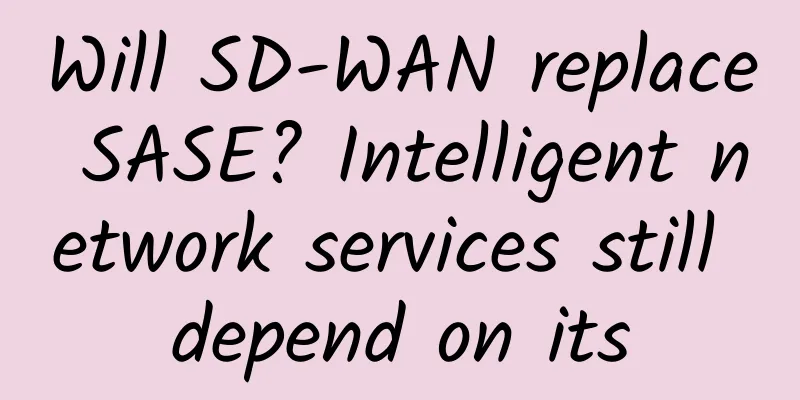What the future of wide area network (WAN) management looks like

|
The recent surge in the number of employees working from home has put cloud services back in the spotlight as an important tool to facilitate remote work. However, while cloud-based applications can provide significant benefits, there are also some challenges in migrating applications to the cloud. For example, if the enterprise's network is not adequate to handle the increase in traffic, then latency, downtime, security and privacy issues will become prominent. As a result, organizations must re-examine how they manage wide area networks (WANs). The resiliency and availability of your WAN is critical to your business. Every minute of downtime can cost your business money, customers, and productivity. A WAN that fails to adequately manage and direct traffic, or that breaks down at critical moments or causes video conferencing and other collaboration tools to freeze, is useless to an enterprise trying to compete effectively in a new business environment where connectivity is more important than ever. Organizations need to demonstrate that their WANs can improve network performance and address security gaps. Software-defined WAN (SD-WAN) is an overlay management technology that provides enterprises with significantly improved visibility and control. This increases the speed and connectivity of the network while enabling enterprises to control and prioritize network traffic, providing performance and price advantages, greater flexibility and easier management to optimize application functionality. Importantly, it simplifies an organization’s relationship with telecom operators, making operator network migration and multi-vendor network management simpler and less risky. The future will be characterized by changing needs of workers and businesses, as well as greater demand for services that can accommodate diverse teams and remote work arrangements. SD-WAN will be a critical component for businesses to operate with a resilient and available network. To highlight the importance of SD-WAN, MEF, an international organization of more than 200 industry-leading innovative companies, released the first global industry standard MEF70 defining open SD-WAN service attributes and services in July 2019. The standard aims to improve the end-to-end application experience while ensuring service resiliency across multiple telecom providers by making it easier to interface application routing policies with intelligent underlying connectivity services. Overall, the standard is designed to give enterprises confidence that certified MEF 3.0 SD-WAN services meet a set of basic requirements based on business connectivity and performance. For enterprises, SD-WAN will provide the following benefits:
The future of the workforce will include cloud-based applications and remote working, and in order for businesses to adapt to these demands, having the right WAN services is critical. Having a resilient network that can connect different offices/employees with minimal disruption will be key to maintaining a competitive advantage. Improvements in wide area networks, such as SD-WAN, will bring benefits to operational performance, customer experience, and the digital transformation of enterprises. |
Recommend
Technology empowers the future of intelligent driving-2021 Cisco Automotive Industry Summit held in Beijing
April 23, 2021, Beijing - The 2021 Cisco Automoti...
How 5G will impact telecom enterprise asset management
Digital transformation has had ripple effects on ...
How is HostYun? Simple test of HostYun Hong Kong EQ-CMI line VPS
There is no discount information, so continue tes...
A "traffic evolution" is coming: What upgrades will 5G bring to vehicle networking and autonomous driving?
2019 is regarded as the "first year of 5G&qu...
Borui Data passed the CMMI Level 5 assessment, the first in the domestic APM field
Recently, Borei Data passed the CMMI Level 5 asse...
Research shows that global 5G network infrastructure revenue will grow 39% in 2021
Gartner predicts that global 5G network infrastru...
The upgraded broadband satellite communication system of the United States will increase the bandwidth by 45%
The first upgraded WGS satellite from the U.S. De...
Do I need to turn off data traffic after connecting my phone to WiFi? The operator gave the "answer"
Nowadays, everyone has a smartphone. As long as i...
TTCLOUD: San Jose high-defense server $59/month, dual E5-2620v2/16GB/500G SSD/100M unlimited traffic
TTCLOUD is a relatively new foreign hosting sales...
Develop a comprehensive budget plan for your data center
Data center budget planning is a difficult task t...
How far is it from 5G network commercialization to being affordable for everyone?
This year's government work report proposed t...
What are the most exciting IoT trends for 2018?
The Internet of Things is accelerating its entry ...
Learn crawling skills in Yiwen
[[336016]] Preface As an important tool for cold ...
Fiber Optic Innovation: Exploring Cutting-Edge Research and Development
Fiber optic technology has revolutionized innovat...









